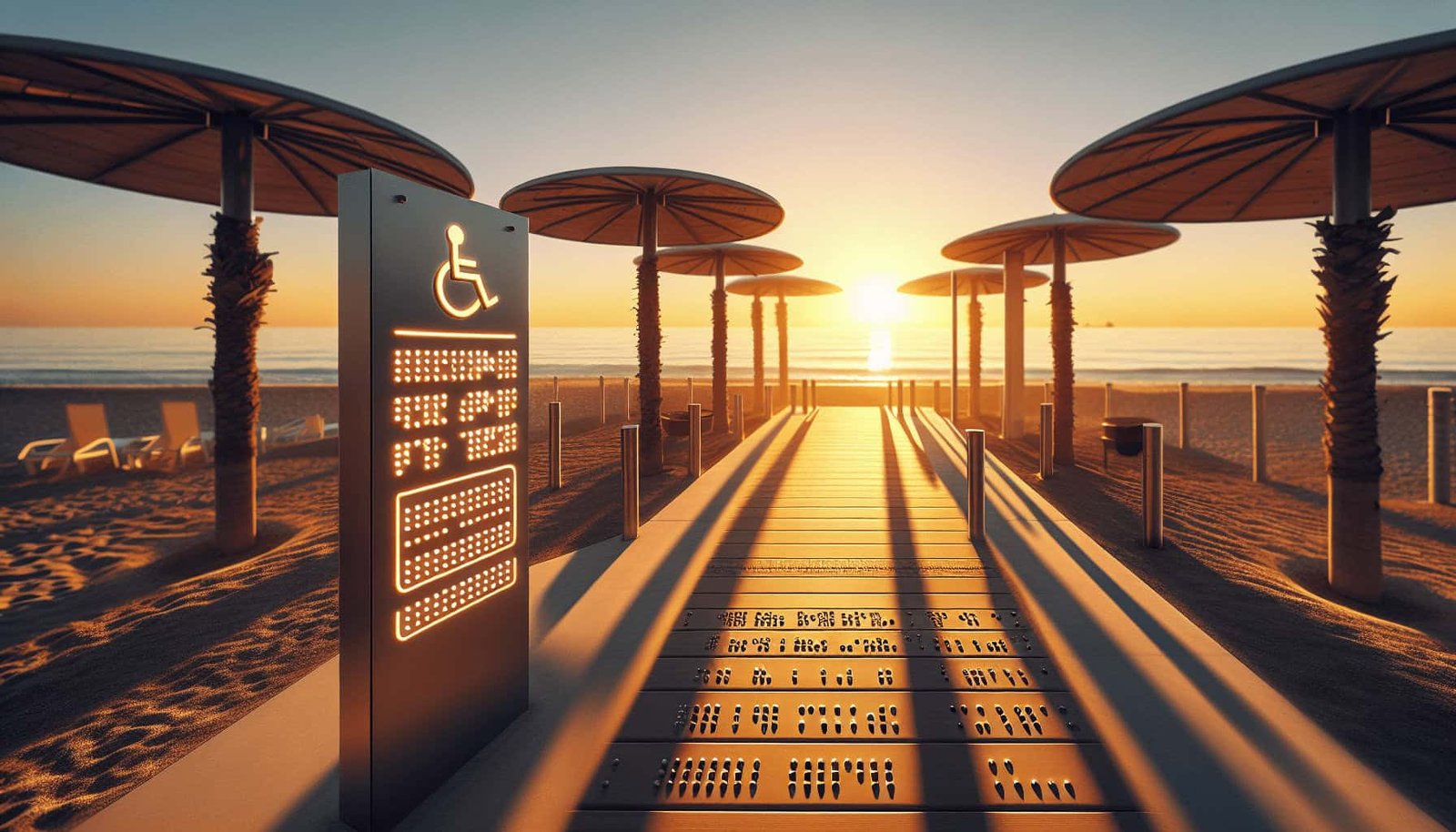Have you ever wondered how to find information about the accessibility of beaches for those with visual or hearing impairments?
Accessibility is paramount to ensure that everyone, regardless of their abilities, can enjoy the natural wonders our world has to offer. Beaches are no exception, and they should be accessible to as many people as possible. If you or someone you know has visual or hearing impairments, it’s important to gather relevant information to make beach outings comfortable and enjoyable. This guide aims to help you navigate the resources available and understand what to look for when accessing information on beach accessibility.
Understanding Accessibility Needs
Visual Impairments
Individuals with visual impairments may require tactile guides, Braille signage, audible cues, and clear pathways to navigate the beach safely and independently. It’s crucial that the beach environment is designed or adapted to provide these features.
Hearing Impairments
For those with hearing impairments, accessible beaches may offer visual communication aids like clear signage, written information, and visual alarm systems. Ensuring that instructions and warnings are visually accessible is essential.
Online Resources
The internet is a treasure trove of information when it comes to finding accessible beaches. Various websites, government portals, and online communities provide detailed information about accessibility.
Government Websites
Many countries and local municipalities have dedicated websites that list accessible beaches. These websites often detail the facilities available, such as:
| Country | Website | Features |
|---|---|---|
| United States | National Park Service (nps.gov) | Accessibility information on national parks and coastline areas |
| United Kingdom | GOV.UK | Lists public facilities and accessibility services |
| Australia | Accessible Tourism Australia (australiaforall.com) | Information on accessible travel and destinations |
Travel Review Websites
Popular travel review websites often have sections dedicated to accessibility. Websites such as TripAdvisor allow users to search for reviews specifically mentioning accessibility features.
Local Tourism Boards
Local tourism boards are often excellent sources of information. They usually provide detailed guides and can offer personalized advice regarding beach accessibility.

Accessibility Apps
Several mobile applications are available that help identify accessible locations, including beaches. These apps often use crowd-sourced data to provide up-to-date information.
Be My Eyes
An app that connects visually impaired users with sighted volunteers through live video calls to help with navigation and other needs.
Wheelmap
While primarily focused on wheelchair accessibility, this app also includes information on beaches and can be useful for identifying accessible locations.
Planning Your Visit
Knowing what to look for in advance can make your beach visit more enjoyable and worry-free. Here’s a checklist of things to consider:
Pathways and Navigation
- Tactile Guides: Look for information on tactile paths leading to and from the beach.
- Clear Signage: Ensure there are signs in Braille and large print.
- Audible Signals: Some beaches might have audible beacons to help guide visually impaired individuals.
Facilities and Services
- Accessible Restrooms: Check if there are restrooms designed to be easily accessible.
- Assistance Programs: Some beaches have staff or volunteers trained to assist visitors with visual or hearing impairments.
Safety Features
- Visual and Audible Alarms: Ensure that there are both visual and auditory warning systems in place.
- Emergency Services: Verify that lifeguard stations are accessible and equipped to assist in case of an emergency.

Beach-Specific Guides
Some beaches have guides detailing their specific accessibility features. Look for resources that can provide information about:
Sand and Water Accessibility
- Beach Mats and Wheelchairs: Some beaches offer beach mats or specialized wheelchairs for easier navigation on the sand.
- Assistance Animals: Check the policies regarding service animals on the beach.
Captioned Information
- Written Guides and Maps: Visual guides and maps can help those with hearing impairments.
- Captioned Tours: If the beach offers guided tours, find out if they provide captioned or written materials.
Community Support
Connecting with other individuals and families who have similar needs can be incredibly helpful. Online forums, social media groups, and local support organizations often share valuable first-hand experiences.
Social Media Groups
Platforms like Facebook have groups dedicated to accessible travel. You can join these groups to ask for recommendations and share experiences.
Local Support Organizations
Organizations that support visually and hearing-impaired individuals often have resources or know of local beaches with excellent accessibility features.

Collaborative Approach
Accessibility is an ongoing process, and your feedback can help improve it further. Consider providing feedback to the respective authorities or organizations to help them understand better the needs and preferences of visually and hearing-impaired beachgoers.
Providing Feedback
Write reviews and send direct feedback to authorities or organizations managing the beach. This helps them make the necessary improvements for future visitors.
Volunteering
If you have the time and resources, consider volunteering with local organizations that focus on making public spaces more accessible. Your firsthand experience can be invaluable in shaping accessibility initiatives.
Conclusion
Finding accessible beaches for those with visual or hearing impairments requires a bit of research and planning. By using online resources, mobile apps, and the support of community networks, you can access valuable information that ensures a delightful beach experience. Remember to verify the facilities and services in advance, and don’t hesitate to provide feedback to help improve accessibility for everyone. Enjoy your beach outing, knowing that you’ve taken the steps to make it as smooth and enjoyable as possible.
